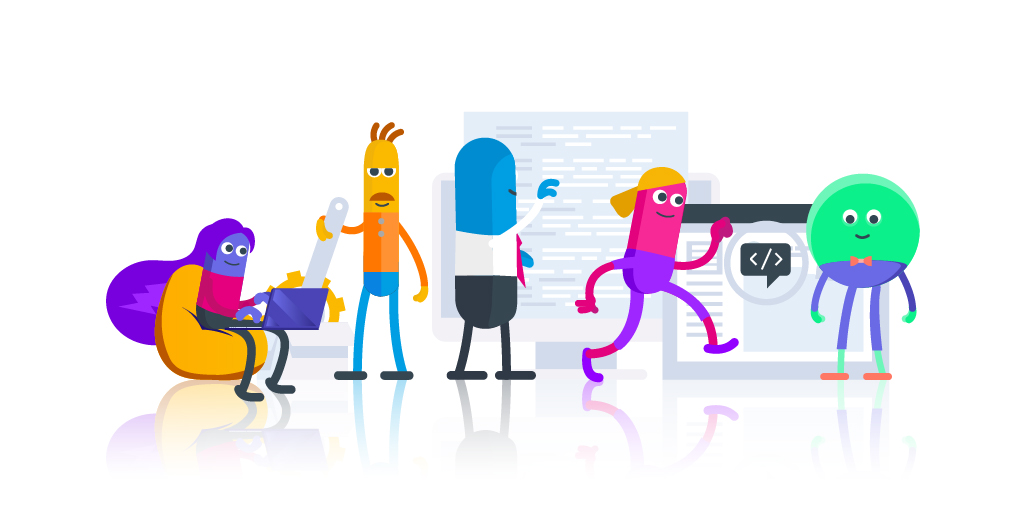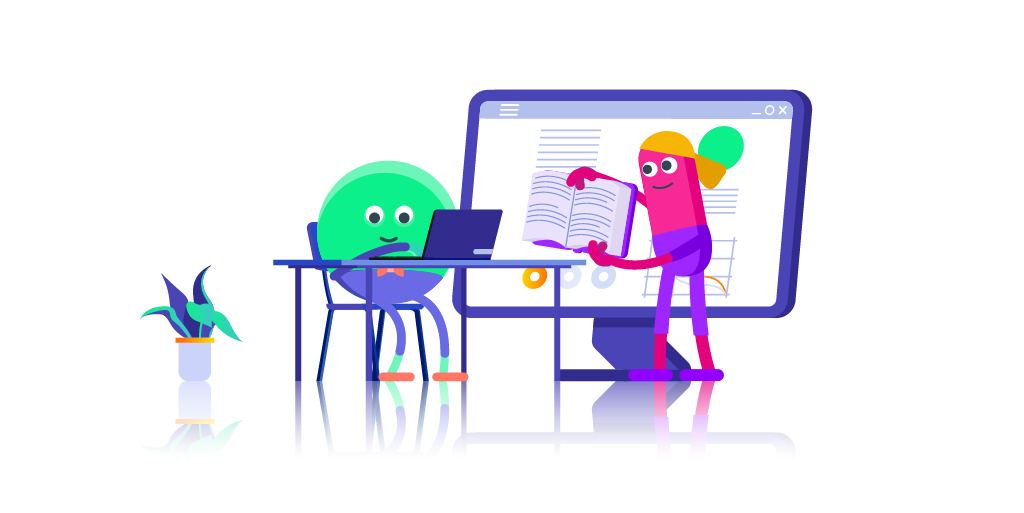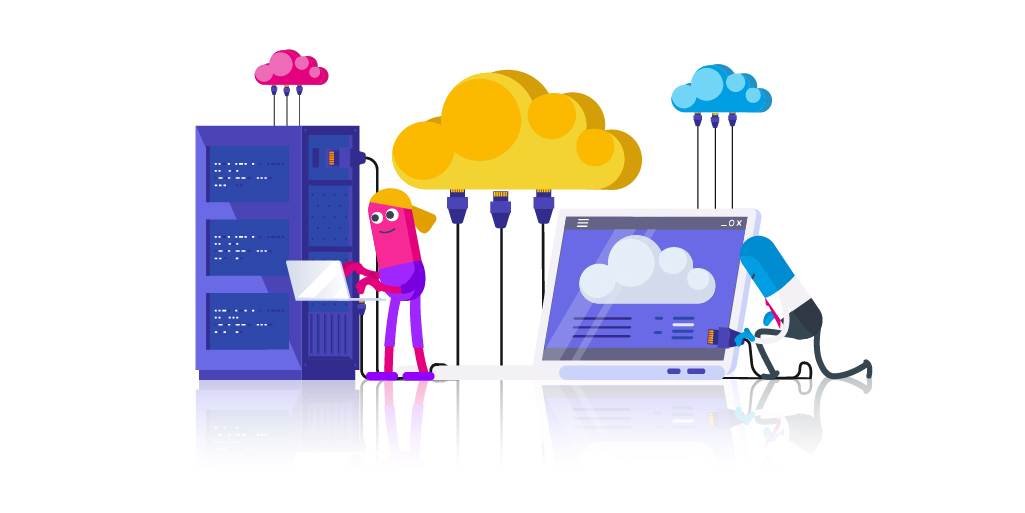11 July 2022
Moving from mandatory to meaningful learning

Jonny McAlister
Head of Customer Experience
Discover how to make the transition from learning that your employees are forced to complete to learning that really means something to them. It’s time to talk about moving from mandatory to meaningful learning.
Mandatory learning. Even the words sound oppressive, dull and uninspiring.
You know what it really means is learning that must be completed. No ifs, no buts. And your learners know that, too.
So, if everybody involved knows that this mandatory learning is unavoidable, it becomes a case of changing perception. How do you get your team excited about developing their own skills? How can you create or nurture a learning culture that’s ingrained within your organisation? How do you move from mandatory to meaningful learning?
You see, achieving high levels of compliance by making people complete learning that they are legally or professionally compelled to complete should not be the true measure of learning and development success for your organisation.
We all love to see a big, juicy percentage figure in the completion stats, but it’s vital to move beyond those quick-wins. You need to engage your workforce in learning on a deeper level, and that means developing new ways of learning and personalising learning content to achieve that.

Change how your team perceive learning
When we’re working on an e-learning project, we like to engage with end users of the platform we’re building. At the outset of a new project, we see the same perceptions of learning repeated time and again.
How learning is perceived
Compulsory
A dreaded task to be completed annually in the name of box-ticking. The same content, the same information, the same process repeated over and over again. Instantly put out of mind until it rears its head again in 12 months’ time.
Ordered
An unwanted disruption to schedules and work that requires important work to be dropped to undertake training at a set time and place.
Mundane
Largely irrelevant and full of information that is not useful when it comes to real work. Text-heavy pages, slow narration and dated design.
Conventional
A focus on traditional ways of learning, resulting in an overload of information that is hard to remember and apply in the workplace.
How to flip these perceptions
Compulsory Purposeful
Create structured learning and development that enhances an employee’s knowledge and skills. Purposeful learning encourages a purposeful workplace in which your employees feel valued, respected and needed.
Yes, employees need to be trained to do a professional job, but soft skills like teamwork, leadership and resilience are what will really set your company apart.
When your employees feel appreciated and understood as individuals with their own set of needs, that will give them a renewed purpose in the role. A workplace full of people with a heightened sense of purpose is the perfect environment for collaboration, productivity and efficiency to thrive.
Ordered Flexible
Since 2020, we’ve all learned that we can be more flexible than we thought. Individuals, families and organisations have all had to adapt to big changes. In some cases, the level of flexibility has been to degrees that would have been dismissed as impossible as recently as 2019. Bring that flexibility to the learning opportunities available to your employees.
There will be exceptions but for the most part your learners should be able to learn how they want to learn, where they want to learn, and when they want to learn.
Mundane Innovative
There’s no reason for the learning you’re delivering to be dull. Make it easy for your employees to identify and find learning opportunities that will support their development. Their personal development can be aligned with the organisation’s progression if you identify skills gaps and help employees plot pathways that will create plans for organisational growth and succession.
Conventional Exclusive
Instead of overwhelming employees with everything they could possibly need or wish to go, give the curated content that delivers a personalised and interactive learning experience.
Buy or develop content that is not only highly relevant to your organisation, but also very specific to your employees’ roles and skills. Draw upon the knowledge that’s already within your organisation. Don’t ring-fence the development of learning content within your learning and development team. Capture the expertise within your team and curate content based around that.
This will result in more personalised, relevant and specific learning, and encourage engagement with learning and development throughout your organisation.

How to develop meaningful learning experiences
We’ve developed more than 1,000 e-learning platforms since 2005. Broadly speaking, ensuring that these platforms develop meaningful learning to end users depends on three key factors:
- Content
- Personalisation
- Technology
Let’s look at all three factors in more detail.
Use content to make mandatory learning more engaging
Get interactive
The more engaging and inspiring your learning content, the more people learn. Better content always creates better learning.
That means creating interactive learning experiences. Interactivity not only results in engaging content, but also has proven benefits for holding attention during learning and improving memory retention later.
Your interactive learning content should be reactive for the best results. Put your employee in different scenarios and have them consider and react to those circumstances.
This is especially true of simulations, when learners have the freedom to experiment with decisions in a risk-free setting. Create customised content based on your organisation’s needs, then see how your users react. When your employee is the participant, rather than the spectator, they will want to be a part of the learning experience.
This sort of learner-centred content also encourages reflection. Encouraging employees to reflect on performance, to consider what went well and what didn’t work out, is a critical tool for your organisation and will develop best practice among your employees.
Add some personality
Combat those perceptions about dry, mundane content by making your employees laugh. Use engaging mock scenarios, audience polls and other interactive elements to keep them engaged. And bring some personality or humour to the micro-copy and content.
Identify areas where attention currently drops off and inject a little bit of personality at those points. Some topics will naturally be more interesting than others. Avoid the temptation to get the boring stuff ‘out of the way’ by splitting it up and mixing it in with some more exciting content.
Use video learning content
By incorporating video into your content, you’re increasing your chances of appealing to more learning styles.
There’s a whole host of ways you can introduce video to help make less exciting content more engaging.
Think about context-based videos, which are great for highlighting real-world scenarios and bringing the content you are delivering to life.
Another option is animated videos, which are effective for telling stories while also breaking down complex ideas. Creating graphics, illustrations and animations is often a budget-friendly way of creating unique learning content.
Use storytelling
Crafting an exciting story to aid the delivery of less exciting content can be a great way of keeping users engaged. A story provides context, stimulates emotions and reinforces key points — all great ways of holding attention and improving knowledge retention.
Draw upon personal experiences and real-life examples, or online research into what others have done, to create stories that make your learning content more exciting.
Condense, spread and streamline your content
The time it takes to finish a mandatory training course can be overwhelming. Create a curriculum that takes your employees two hours or less to complete. Shorter training courses keep learners engaged and focused, and lead to higher testing scores.
Your employees may already know everything they are being tested on. Being forced to complete each course topic in its entirety creates the sort of resentment towards learning that we’ve discussed.
One way to fast-track these employees through the course quickly is with an initial question and answer pretest. Ask your learners between one and three questions at the beginning of each section. If they answer correctly, they receive full credit for that topic and immediately move on to the next section. If they answer incorrectly, they are presented with additional information and then attempt the questions again.
Curate content from in-house knowledge
Knowledge management and sharing is one of the most crucial, yet overlooked, aspects of workplace learning. When employees don’t get the knowledge they need to perform in their tasks, your organisation suffers.
Sharing knowledge increases productivity, social interaction and trust among your team. Build a knowledge bank that nurtures your team and that all employees can access, even as people come and go.
To do this successfully you need to create a culture of knowledge-sharing by:
- Leading by example and sharing your own knowledge.
- Identifying influencers and content creators who have knowledge that will be valuable to other employees.
- Recognising and rewarding those who take the time to share their knowledge.
Once you’ve started capturing and sharing knowledge, incorporate it into your learning resources as personalised and contextual learning content for your organisation.
Use personalisation to make mandatory learning more relevant
Create pathways
It’s difficult to reach a destination you’ve never been to without a map. That’s the situation your employees are in when learning a new skill. They need clear learning objectives and milestones to help them understand their progress.
Creating pre-defined learning pathways gives employees the context they need, but also gives them the control and flexibility to choose a route that is best for their career goals or professional interests.
Involve line managers, who will be able to assign relevant job tasks according to the pathway being followed by each employee. They may also suggest changes or alternative pathways in accordance with the learner’s job role and function.
Offer targeted content and courses
It’s important that your learning content is presented to the correct audience. Make each course’s content as personalised and role-specific as possible. This helps your learners to stay engaged and improves their overall learning experience.
Develop skills-based content
Target your learning content to the skills each employee needs to develop in their role. Presenting introductory content to an experienced professional will kill their motivation. Advanced content will have a similar effect on an inexperienced new starter.
Only deliver learning to those who need and want it, and make sure that what you’re delivering is targeted to the skills each individual needs to develop in their role.
Ask for feedback
The best way to ensure your employees are engaged in learning is to ask them what would help them to learn better. Get opinions on what content is needed, which incentives matter most to them and what topics tend to create issues.
This is a double-whammy of creating valuable information for you and motivating employees by making them feel that their opinion is valued.

Use technology to bring it all together
We’ve covered a lot of ground so far. You — just like your employees — have a finite number of hours in a working week. So how do you pull everything we’ve discussed together into something that’s workable for your organisation?
Our recommendation is to lean heavily on technology. Use a platform that delivers on the key aspects of making learning more meaningful, while also easing the administrative burden of all the suggestions we’ve made.
Ideally, this means providing a single location for employees to learn, engage and develop their skills (and a single location for your organisation’s learning and development team to manage it).
In this regard, the Totara Talent Experience Platform gives the technology you need to align learning, engagement and performance within your organisation.
The Talent Experience Platform comprises:
Totara Learn: help your people learn and grow
Totara Learn is a learning management system that gives your organisation everything it needs to help employees master new skills or behaviours through formal and directed or informal and self-directed learning.
Totara Engage: help your people engage and deliver
Totara Engage is a learning experience platform that develops peer-to-peer collaboration, and curation and sharing of knowledge. It also encourages employees to show initiative and entrusts them with helping to develop workplace knowledge and culture.
Totara Perform: help your people perform and succeed
Totara Perform is a performance management platform that stimulates productive uses of your employees’ skills, develops a culture of continuous feedback for continuous improvement, and gives your organisation’s managers the infrastructure to become coaches and mentors for their teams.
Taken as a whole, Totara TXP is a suite of tools that empowers your organisation to deliver, manage and measure more meaningful learning.
Key takeaways on moving from mandatory to meaningful learning
Your employees benefit most when training sessions are as interesting and relevant to them as possible. Learning new skills makes them more confident in overcoming obstacles and achieving your organisation’s targets.
Your next steps are to:
- Review your current offering and expand or refine it with engaging and personalised content.
- Consider different types of employees within your organisation and present content relevant to their needs, experience and skills.
- Create a single location for your employees to learn, engage and develop their skills.
Implementing these ideas will help your employees to learn more effectively and produce better results for your organisation.
Ready to move from mandatory to meaningful learning?
Talk to us about transitioning from mandatory to meaningful learning and how the points we’ve discussed here apply to organisation. Just fill out the form below and we’ll be in touch.



